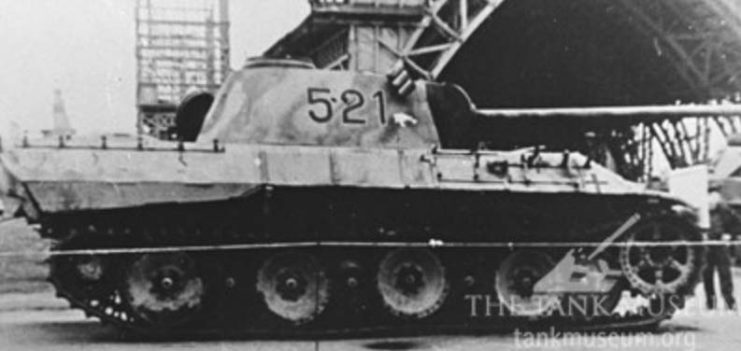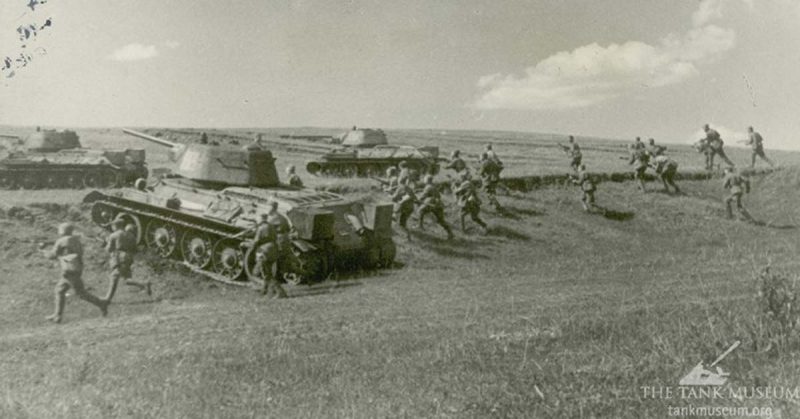Prior knowledge of the German attack enabled the Soviets to bring Operation Citadel to a halt. Part 2 tells the story of the Soviet counterattack during the Battle of Kursk.
From the outset, the Soviet plan had been to absorb the German attack, wear down the German forces, especially their Panzer units, using their carefully planned defences and then go over to the offensive and drive them back. By mid-July Soviet commanders assessed that the time was right to launch their attacks.
Rather than try to push the Germans directly out of the Kursk salient, the Soviets instead attacked to the north and south of the Bulge. They deployed forces that hadn’t been involved in the battle so far, meaning the units were at full strength and the soldiers in them weren’t exhausted from days of fighting.
Operation Kutuzov and Rumiantsev
Operation Kutuzov, the attack in the north, began on the 12th July. The Soviets attacked on a narrow 5 ½ mile (9km) front against very heavy German defences.
In the south, the Soviet attack was called Operation Rumiantsev. Aimed at Kharkov, it began on the 3rd August. Deception was used to attract German reserves to the wrong place before the attack was launched.

In both operations, the intent was for infantry supported by massed artillery to break through the German defences, then for tank units to advance, or exploit, into the German rear areas. However, in both cases, the German defences were so strong that some tank units had to be used to achieve a breakthrough. Despite this both attacks were successful. In the north the Soviets reached Orel on the 5th August, and Briansk by the 18th, straightening the front line.
In the south Soviet forces broke through on the 5th, and by that evening some units had made advances of up to 37 miles (60km) behind the German lines. German reinforcements were rushed to the area, but they were disorganised and overextended. A counterattack at Bogodukhov on the 11th forced the Soviets to halt, but reinforcements soon arrived and the advance continued. Kharkov was captured on the 23rd, bringing the Battle of Kursk to an end.
Casualties and Consequences

Before Kursk, major German offensives had always been able to break through an enemy’s defences and into their rear areas, allowing the Germans to cut off frontline units and disrupt reinforcements and communications. Kursk was the first time this had been stopped from happening. In addition, the fighting at Bogodukhov marked the first time a German counterattack had failed to destroy a Soviet force exploiting forwards.
Defeating Operation Citadel cost the Soviets around 178,000 casualties, 1600 armoured vehicles and 460 aircraft. The Germans lost around 57,000 men, 252 tanks and 159 aircraft. However, the Soviets were far better placed to replace these losses and continue fighting than were the Germans. This consequence of Kursk would become clear as the war continued.
Kursk was the last major German offensive on the Eastern Front. From now on the Soviets held the initiative, allowing them to dictate the timing and location of attacks. The Blitzkrieg which had carried the Germans through Poland, France and huge swathes of the Soviet Union had finally been defeated.
We’ll take a closer look at the tanks that took part and the question of whether Kursk was, in fact, the largest tank battle in history in future posts.
Read the background on the Battle of Kursk here and information on the German offensive in Part 1.
A message from The Tank Museum:
“Please Support Us: As a charity, we rely on public support for all our activities. Our work is funded entirely by people like you. With your support, we can continue to create content. With the right support we might be able to do it more regularly – and can be even more ambitious. Please Click on the Banner Below.”
Thanks to the Tank Museum for this Blog, which originally appeared here.

